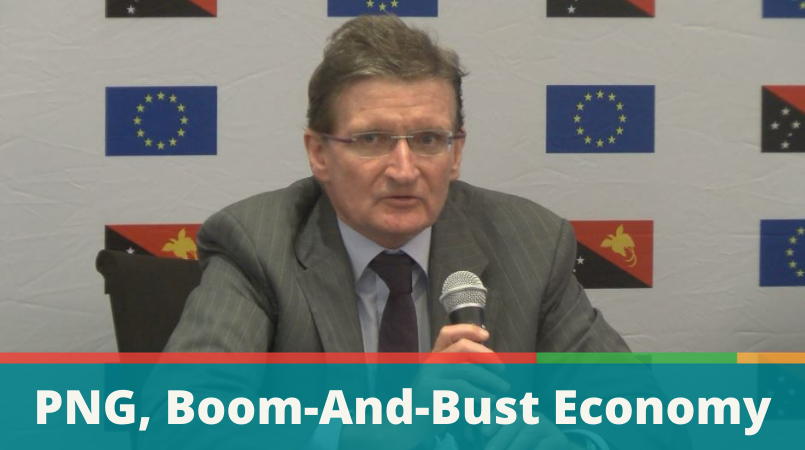
The Bank of Papua New Guinea (BPNG) predicts total real Gross Domestic Product (GDP) in 2021 to grow by 1.0 percent compared to an earlier forecast of 2.5 percent.
President of the PNG Europe Business Council Inc., Michael Sullivan, in a statement said, the lower-than-expected recovery for 2021 is mainly due to an anticipated decline in the mineral sector and the uncertainties associated with the ongoing impact of the COVID-19 pandemic.
He said the growth in the mineral sector, which includes oil and gas has also been revised downwards because of the closure of the Porgera gold mine while the non-mineral sector is expected to do better.
Mr Sullivan made these statements at the ‘Second European Union – PNG Business, Trade and Investment Conference held in Port Moresby this week.
He stated that the growth in the non-mineral sector reflects favourable international prices for many agricultural products, increased production, further easing of COVID-19 containment measures and the Government’s price support and freight subsidy program for selected agricultural commodities.
Preliminary survey data available to BPNG also points to higher employment in the second half of 2021 compared to the first half.
Growth in employment is expected to be broad based reflecting adjustments to the ‘new normal’ working environment and increased economic activity in the agriculture, forestry, fishing, wholesale and retail, and the manufacturing, mining and other service sectors.
Mr Sullivan describes the PNG economy as a ‘boom-and-bust economy.
“Every economy has its ups and downs, peaks and troughs. In PNG however, the peaks have been particularly glorious and the troughs particularly dire,” he said.
Mr Sullivan said this is mainly due to the small size of the overall economy. The fluctuations in international commodity prices and the uneven spacing of major resource projects have contributed significantly to the boom-and-bust scenario.
PNG is an export driven economy relying heavily on mineral and agricultural products. These products are subject to volatile world market prices.
At the same time, PNG imports most of the manufactured products consumed in the local economy, products that usually have a fixed price.
He said this mismatch between export revenue and import expenditure makes the PNG economy particularly vulnerable.
The real GDP growth rates for the last 5 years reflect the boom-and-bust economy scenario.
In 2015, total real GDP grew at approximately 7 percent, in 2018, following three years of continual decline, real GDP tanked at approximately minus 1 percent.
In 2019, total real GDP growth was back up at approximately 6 percent and in 2020, total real GDP was negative again at approximately minus 4 percent.
